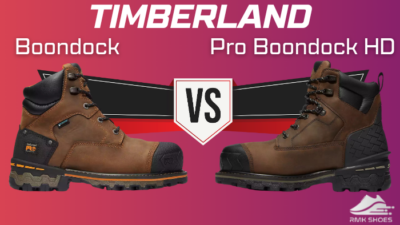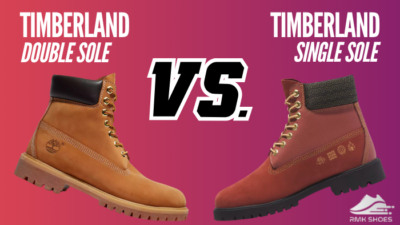The Nike Dunk Low has exploded in popularity, captivating sneakerheads with its sleek silhouette and endless colorways.
But, the surge in demand has given rise to counterfeit Dunks flooding the market.
These fakes, often indistinguishable to the untrained eye, can cost consumers both money and trust.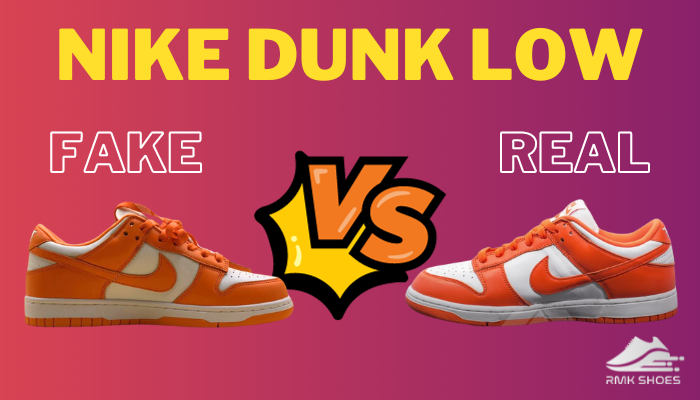
However, here, I will equip you with the knowledge to identify genuine Dunk Lows. Get ready to dissect materials, scrutinize stitching, and unveil the secrets of the Dunk so you can confidently step into the world of authentic kicks.
Let’s begin!
How to Tell if Your Nike Dunk Low is Real or Fake
Distinguishing between authentic and fake Nike Dunk Lows is crucial, as counterfeit versions jeopardize the integrity of the industry, impact brand reputation, and pose risks to consumers.
Recognizing the importance of authenticity ensures consumers receive genuine products, supports ethical practices, and promotes a trustworthy sneaker market.
Here are the key distinctions to spot Real vs. Fake Nike Dunk Low:
1. Packaging
Authentic Dunk Lows come in slightly larger boxes compared to their fake counterparts. The original packaging features a distinct red hue with a subtle touch of orange, contributing to its unique aesthetic.
Conversely, unauthorized Nike Dunk Low packages deviate in size, appearing noticeably smaller. The color of the fake package box leans towards a darker shade of red.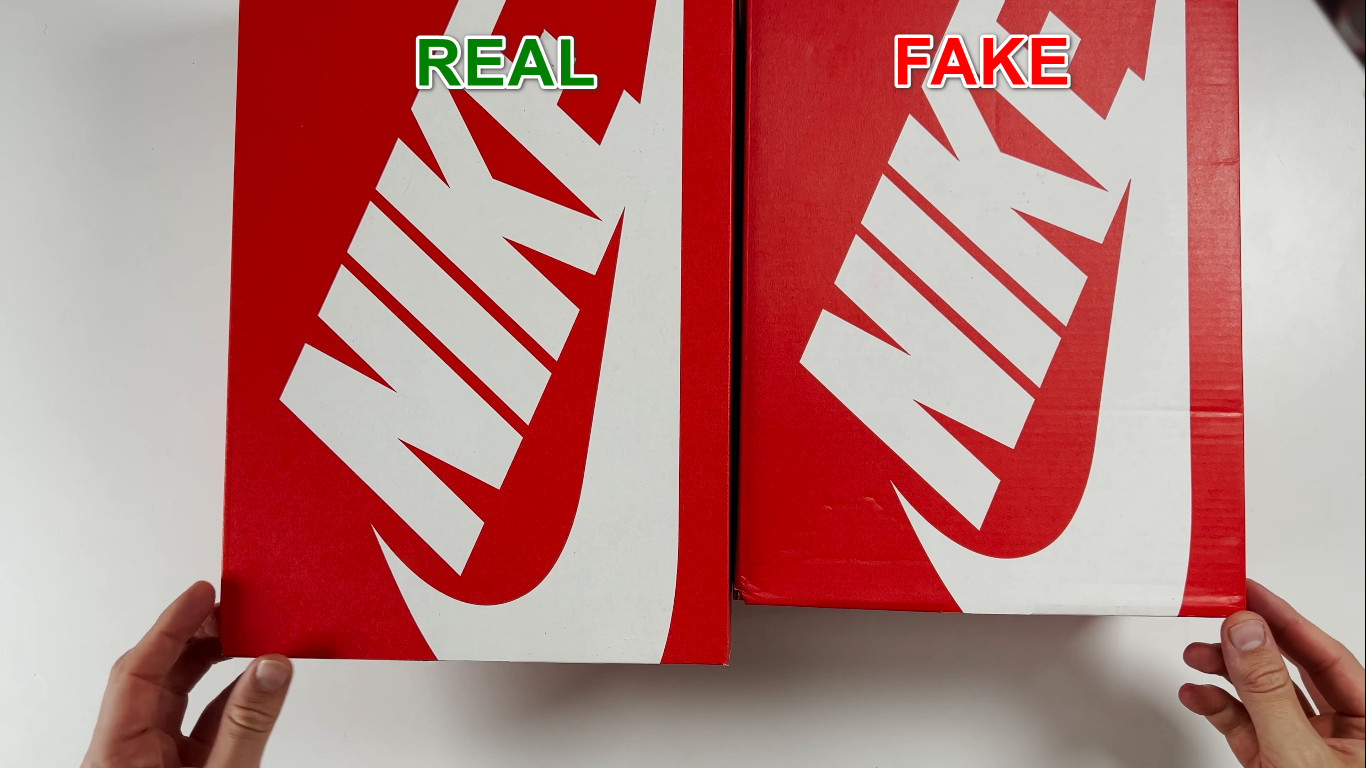
2. Color Discrepancies
When spotting the authentic Nike Dunk Low, you can immediately notice a lighter orange leather adorning the entire upper section and the lace, seamlessly extending to the outsole. This consistent and lighter hue creates a cohesive and visually appealing aesthetic.
In contrast, the replicated Dunks exhibit an overall darker orange color compared to their genuine counterparts. This deviation in the shade becomes a clear indicator of the forgery.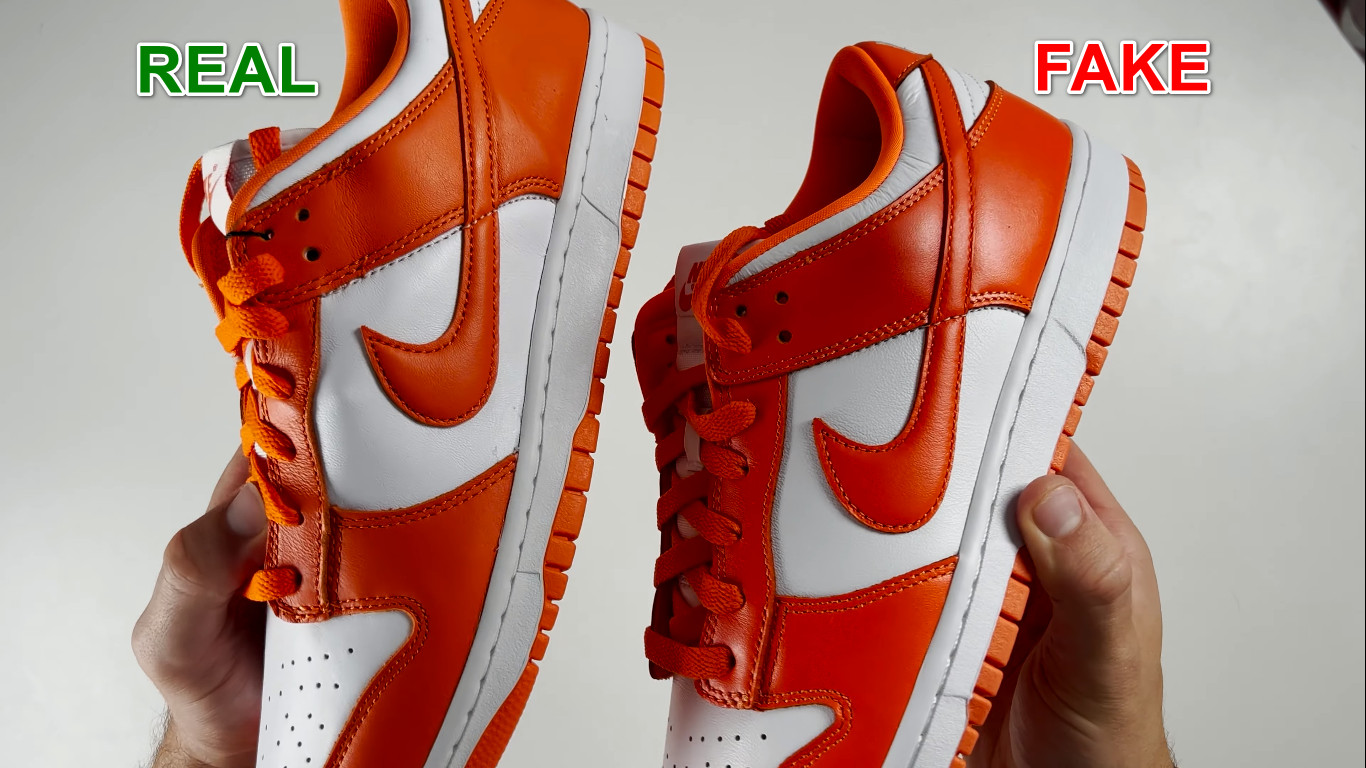
3. Swoosh
One of the key telltale signs of a replica Dunk Low is the swoosh.
On a legitimate Dunk Low, the swoosh is smaller and more delicate, with a sharp, noticeable curve. It’s also positioned further away from the midsole, leaving a noticeable gap between them.
In contrast, a false Dunk Low often has an oversized swoosh that’s less curvy and sits too close to the midsole, almost touching it in some cases.
This difference in size, shape, and placement is a readily apparent indicator of a fake shoe.
4. Different Lacing Setup
In the authentic Nike Dunk Low, the laces move to the top of the shoe from the inside. This design ensures a clean and genuine appearance, with the laces neatly integrated into the shoe structure.
On the other hand, in the counterfeit or fake Dunk, the laces deviate from the authentic path by going outside the shoe before looping back to reach the top.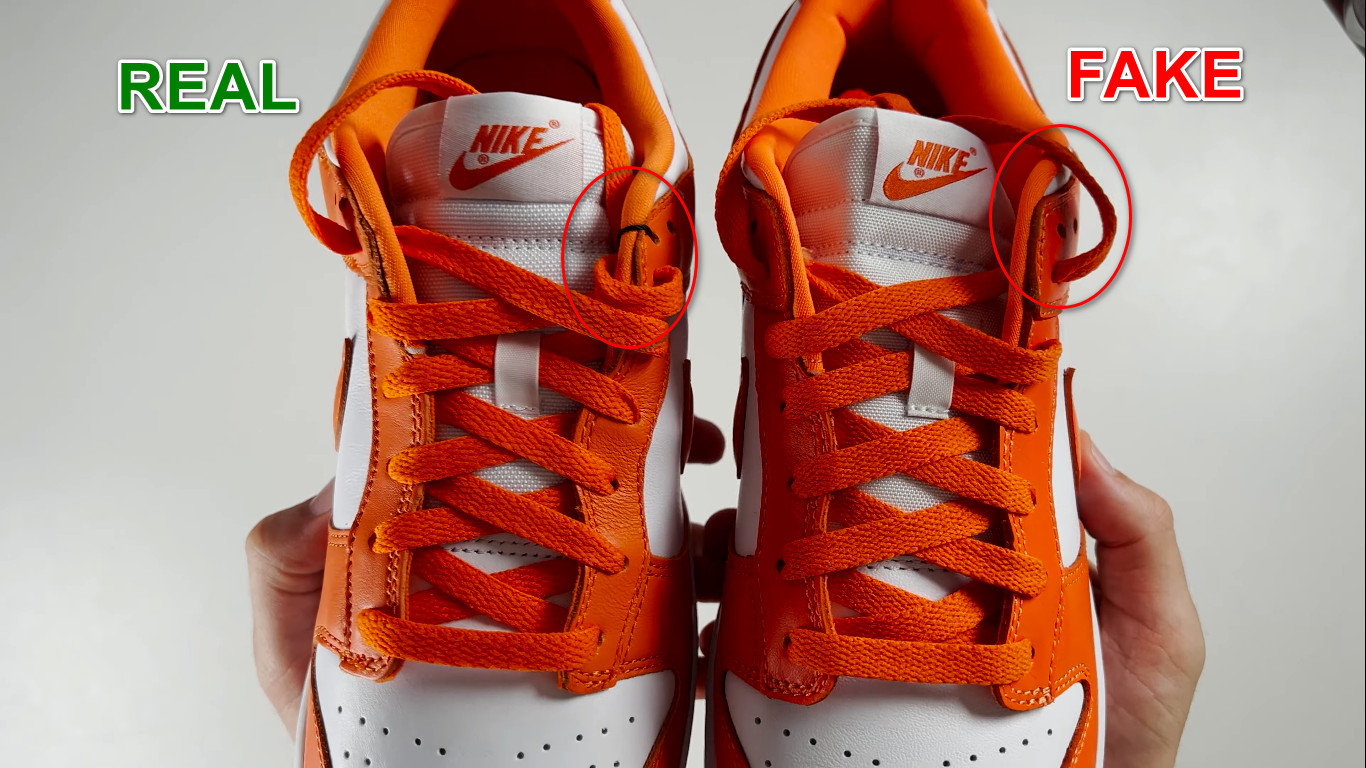
5. Backside Details
In authentic Nike Dunk sneakers, pay close attention to the backside details, particularly in the embroidery of the ‘NIKE’ text.
One distinctive feature is the precise placement of the letter ‘E’ within the embroidery. It is appropriately situated, maintaining the brand’s commitment to quality and attention to detail.
On the contrary, in copied versions, the letter ‘E’ tends to be inaccurately spaced and positioned far apart from the other letters, providing a visual cue for discerning consumers to identify the bogus product.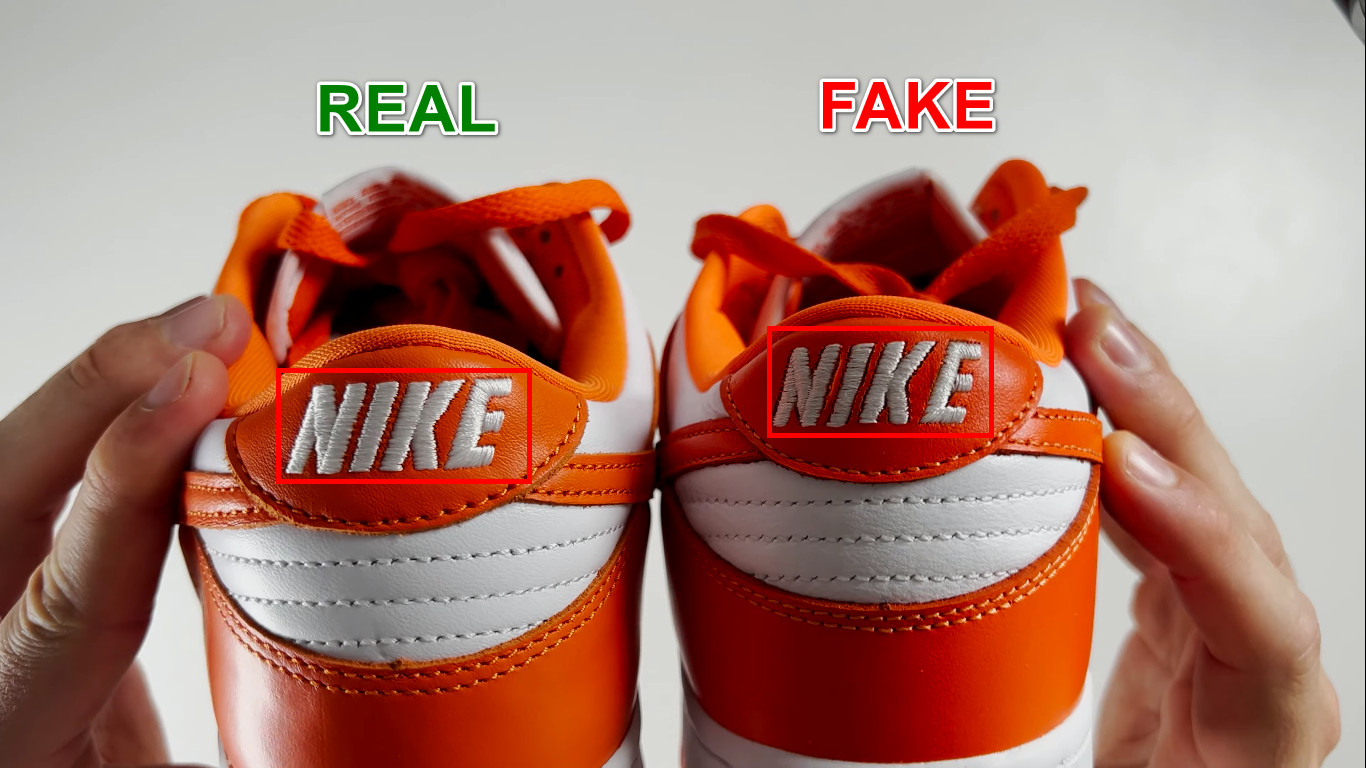
6. Leather Quality
Actual Nike Dunks boast a superior leather quality, characterized by its high-grade composition and exceptionally soft texture.
Authentic leather feels luxurious to the touch and exhibits a supple flexibility that enhances comfort and durability.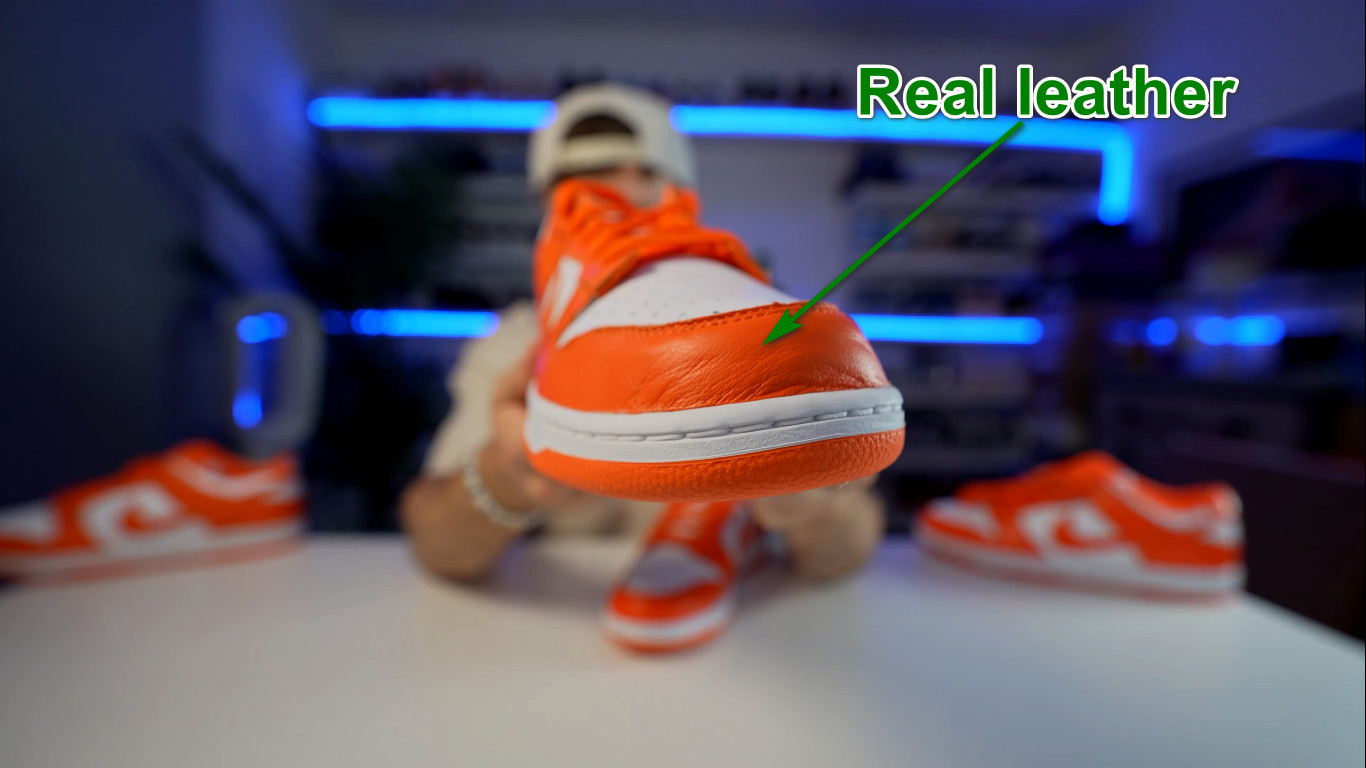
On the flip side, the artificial Dunk Low sneakers’ leather tends to be stiff and have a plasticky feel.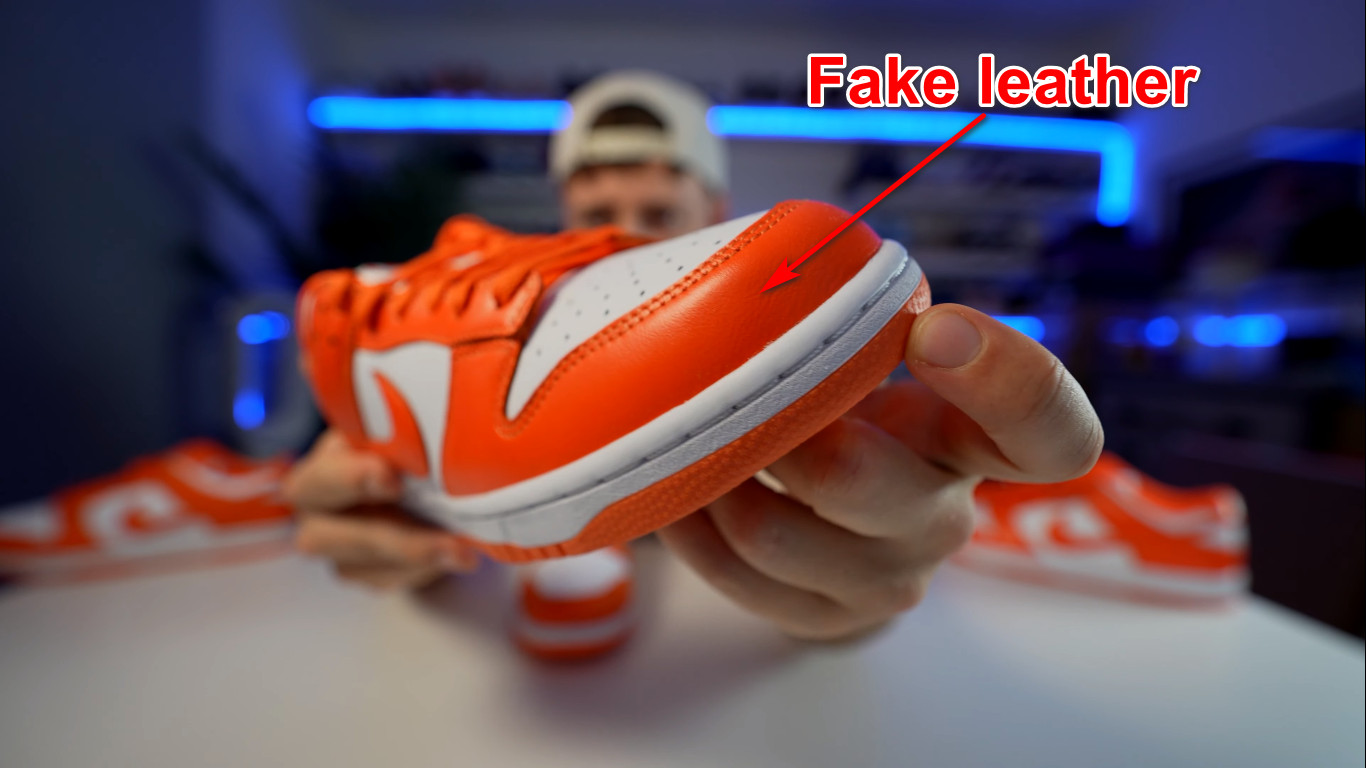
7. Toe Box
The toe boxes in legitimate Dunk Low shoes have a more robust, thicker appearance.
The sturdy design of the toe box not only enhances the shoe’s performance but adds an element of authenticity to the aesthetic.
On the contrary, the toe boxes in the counterfeit Nike Dunk sneakers appear flat. It indicates a lack of attention to detail and inferior manufacturing processes.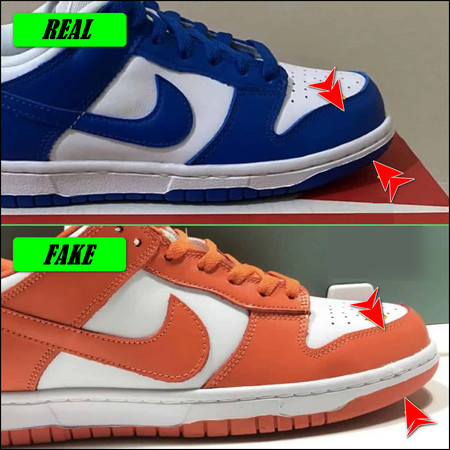
8. Perforations
One crucial aspect to examine is the perforation pattern when distinguishing between true and fake Nike Dunk Low sneakers.
Genuine Nike Dunks exhibit large and deep perforations, contributing to the shoe’s overall design and functionality. These perforations are visually striking and enhance breathability.
On the contrary, bogus Dunks feature smaller and inadequately spaced perforations, lacking the distinctive depth characteristic of authentic pairs.
Additionally, many fake shoes have misaligned perforations, particularly in the toe box area. This misalignment deviates from the precise and consistent pattern found in authentic pairs.
9. Midsole
To differentiate between the legit and counterfeit Dunk Low midsoles, analyze the stitching.
Authentic Nike Dunks exhibit appropriately sized and well-executed stitching on their midsoles. It is thoroughly done, ensuring a clean and precise appearance. Furthermore, the threads are of a suitable thickness, contributing to the overall robust midsole construction.
On the flip side, we can see inadequate stitching when examining unauthorized Dunk Low midsoles. In fake versions, the stitching tends to be excessively thin, lacking the precision seen in real pairs.
Moreover, the threads utilized on fake Dunks are thin and not durable.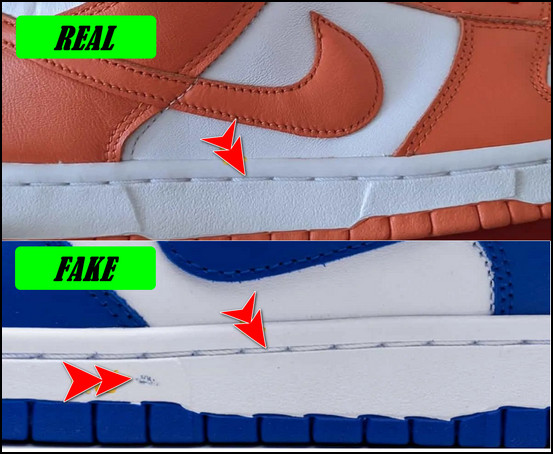
10. Size tag
Genuine Nike Dunk Low shoes, the style code ‘CU1726-100,’ maintain a uniform font-weight, contributing to a polished and uniform appearance.
The font used across authentic Dunk size tags is also consistent, emphasizing the brand’s commitment to quality and attention to detail.
Conversely, the style code ‘CU1726-100’ appears thicker and boxier on forged Dunk Low pairs, deviating from the uniform font-weight.
Furthermore, fake size tags feature a different font altogether, betraying their lack of authenticity.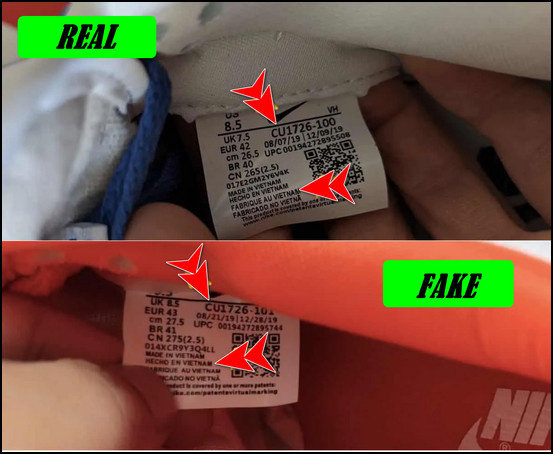
11. Inside Tongue Label
In the actual version, the ‘MADE IN VIETNAM’ text is closer to double stitching, which is visibly thicker, showcasing superior craftsmanship.
However, the unoriginal Dunk Low exhibits a noticeable gap between the text and stitching, and the double-stitching is thinner, revealing a lack of precision and quality.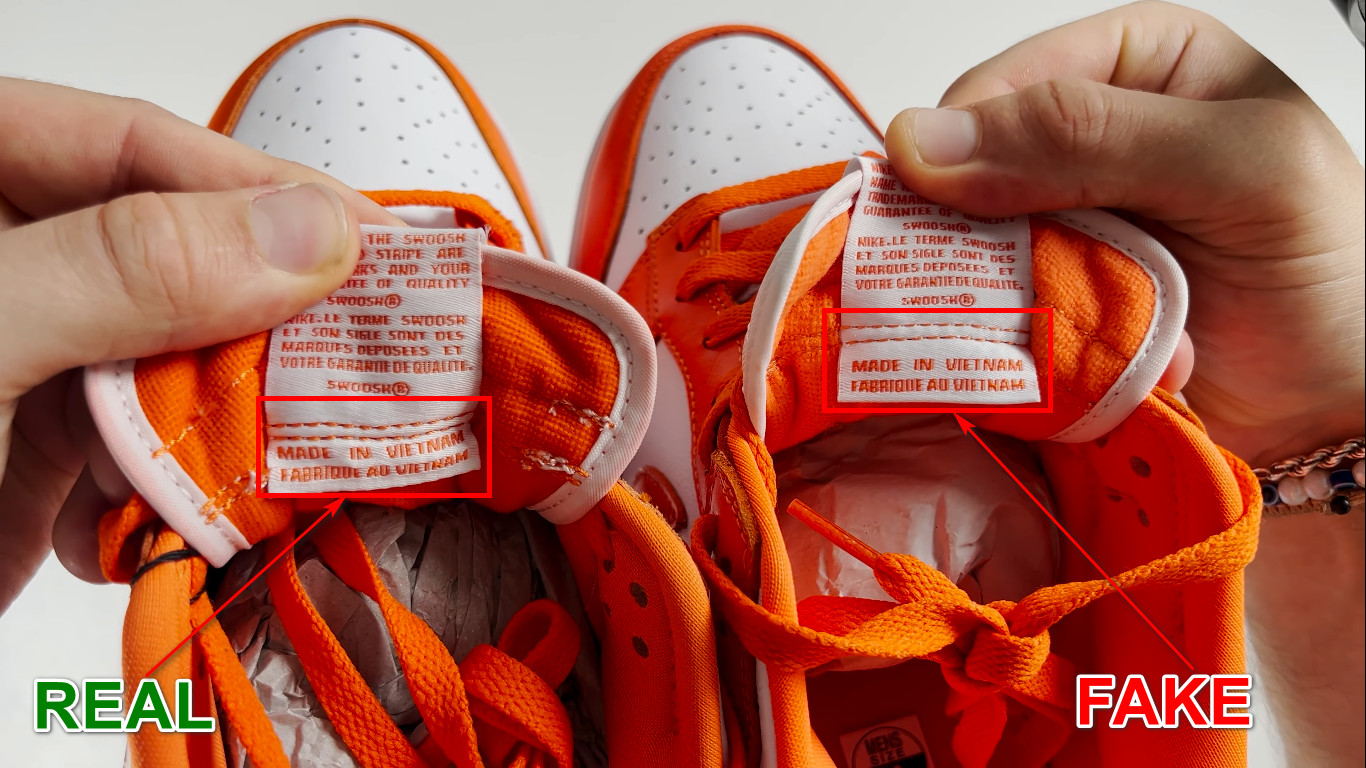
12. Exterior tongue
Real Nike Dunks feature registered trademark ‘®’ symbols that are notably smaller and thinner than their fake counterparts. The spacing between the ‘NIKE’ text and the symbols is appropriately proportioned on authentic pairs, allowing for a balanced and precise design.
On the other hand, replica Dunks exhibit trademark symbols that are thicker and larger than those on genuine sneakers.
Furthermore, a conspicuous red flag of a fake pair is the insufficient space between the ‘NIKE’ text and the symbols, creating a clear visual distinction from the authentic design.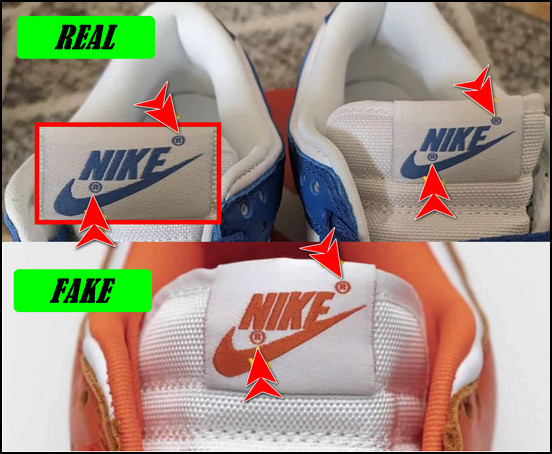
13. Paper Shoe Tree
The paper trees inside Nike Dunk Lows serve as a key authenticity marker. Genuine pairs feature smaller, dark-colored paper trees.
In contrast, copy Dunk sneakers have larger, lighter-colored paper trees with a laminated feel.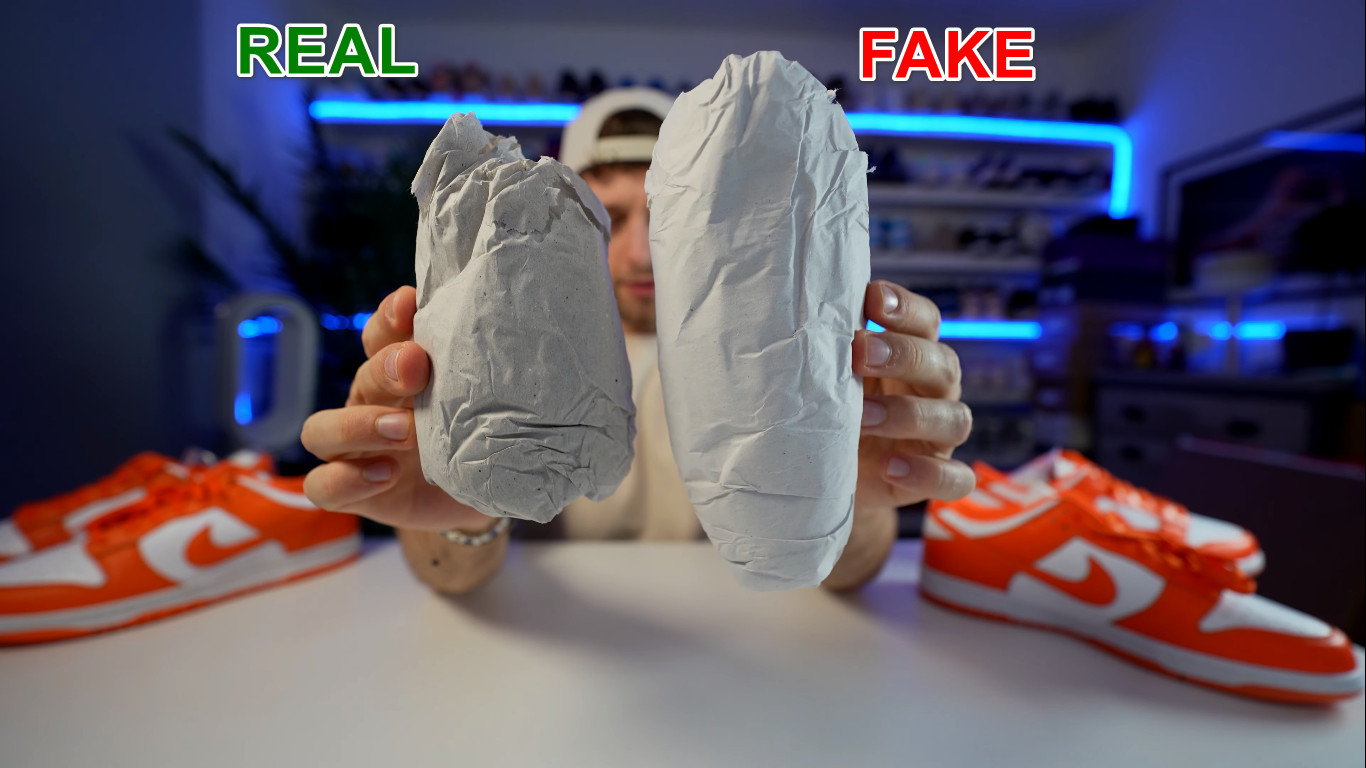
14. Additional Accessories
Both real and fake Nike Dunks come with spare laces in a plastic bag.
Authentic pairs feature a plastic bag with a Nike logo and Swoosh, containing neatly tied laces.
In contrast, false counterparts have a bag inaccurately labeled ‘Nike SB’ even though they are just regular Dunk Lows, and the spare lace is typically untied.
FAQs
How do you tell if a shoe is a Nike Dunk?
To authenticate a Nike Dunk shoe, look for a high or low-top silhouette with a slightly curved tongue, a Swoosh nearly touching the midsole, evenly spaced perforations on the toe box, a well-defined NIKE logo on the back side, and the tongue.
Why is Nike Dunk Low popular?
The Nike Dunk Low’s popularity stems from its perfect blend of classic basketball aesthetics, endless colorway variations, hype-driven limited releases, and collaborations with popular brands and artists.
Is Nike Made in Vietnam original?
In Vietnam, Nike manufactures a significant portion of its products, including footwear, apparel, and equipment. However, ‘Made in Vietnam’ on a Nike product doesn’t guarantee authenticity, as counterfeit versions exist. To verify, check for quality control tags, consistent stitching, and purchase from authorized retailers.

